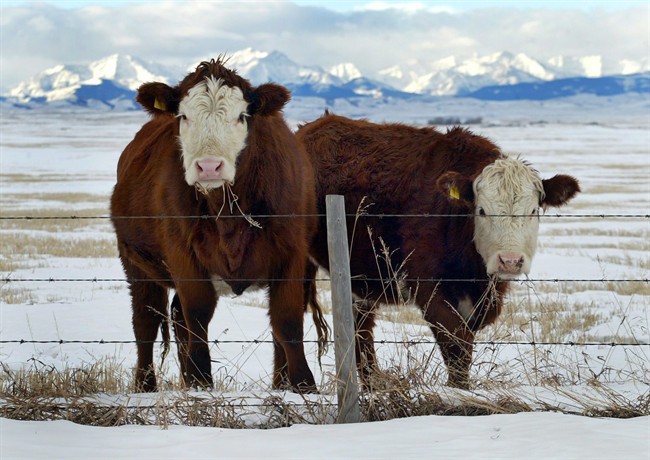EDMONTON – The Canadian Cattlemen’s Association says a beef breeding cow found with mad cow disease on an Alberta farm was born in the province at a different farm.

Association spokesman John Masswohl says the Canadian Food Inspection Agency identified the birth farm.
“They’ve got the birth farm, which is important,” Masswohl said Tuesday.
“I understand that everything is in Alberta.”
The food agency has not told the beef industry when the cow was born or how many other animals from the same herd may have consumed the same feed in their first year of life, he said.
READ MORE: Mad cow disease confirmed in Alberta; first Canadian case since 2011
Officials at the federal food safety watchdog could not immediately be reached for comment. Masswohl said the CFIA gleaned the information from a cattle identification tag that producers are required to attach to a cow’s ear.* The details are stored in a database run by the non-profit Canadian Cattle Identification Agency.
“The CFIA has the right by regulation to access the CCIA databases to help in their investigation,” Masswohl said. “That tag was in there, which enabled them to get back to the birth farm, and will also allow them to identify other animals from that same farm.”
Alberta Agriculture said including a cow’s date of birth on radio frequency information tags has been mandatory in the province since Jan. 1, 2009. It was voluntary before then. The federal government has been bolstering the tag identification system since an outbreak of bovine spongiform encephalopathy in 2003 that devastated Canada’s beef industry.
About 40 markets immediately closed their borders to Canadian cattle and beef products. Most of those markets have since reopened.
READ MORE: What is mad cow disease? Quick facts about BSE
The tags are designed to help contain and eradicate animal disease by making it easier to trace individual livestock animals from birth to death.
The discovery of the BSE cow earlier this month prompted South Korea to suspend imports of Canadian beef.
Last year, Canadian producers sold $25.8 million worth of beef products to South Korea out of total beef exports of $1.9 billion.
Masswohl said the cattle industry hopes the trace investigation will be quick.
“The protocol that we have with South Korea entitles them to suspend their import clearances until Canada provides them with the information to assure them that our beef is safe.
“We are confident that Canada can provide that assurance.”
*CORRECTION: In a Feb. 17 story about mad cow disease, The Canadian Press quoted the Canadian Cattlemen’s Association as saying information from a cattle identification tag on the sick cow’s ear was used to determine its birth farm. The association says it was mistaken and that the birth farm was determined using other information, including a tattoo in the dead cow’s ear.

Comments